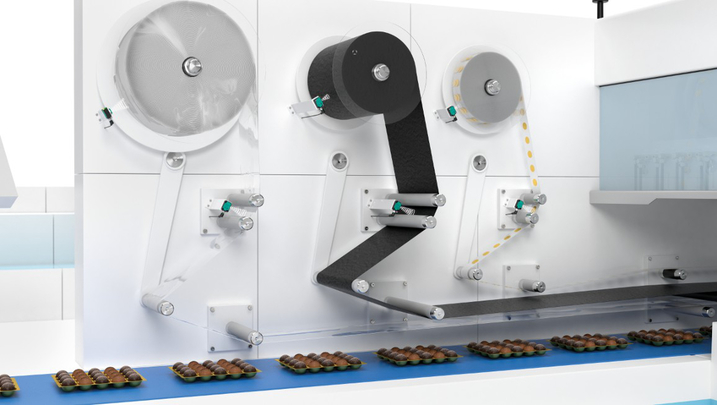Ultrasonic Sensor FAQ: Synchronization and Common Mode
Content of This Article
- 1. What Factors Need to Be Considered if the Recommended Minimum Distance Cannot Be Observed?
- 2. How do the synchronization inputs of ultrasonic sensors work?
- 3. How Does Synchronization and Common Mode Work and What Are the Advantages?
- 4. For Which Application Area Is Synchronization and Common Mode Suitable?
- 5. How Do I Prevent Sensors From Emitting Signals at the Same Time?
- Free PDF Download
- More Information
Ultrasonic Sensor FAQ: Synchronization and Common Mode
When installing ultrasonic sensors, it is possible that the minimum distances are not observed and that the sensors cross-talk as a result. In this blog article, we explain how to reduce the minimum distance between the sensors and how to prevent potential switching faults by synchronization.
1. What Factors Need to Be Considered if the Recommended Minimum Distance Cannot Be Observed?
If the specified minimum distance cannot be observed, Pepperl+Fuchs offers ultrasonic sensors with synchronization inputs to reduce minimum distances and prevent potential switching faults. Sensors equipped in this way can be used in internal or external synchronization or multiplex mode.
2. How do the synchronization inputs of ultrasonic sensors work?
If a synchronization input remains open, the ultrasonic sensor operates in normal mode. The sensor can be disabled and enabled again by an external trigger signal, which is triggered by applying a defined potential (L+/L-). As long as the sensor is blocked, no ultrasonic pulses are emitted. The outputs (analog and switching output) are “frozen” in this state. An update of the outputs takes place after the sensor has been released again via the synchronization input for at least one measuring cycle. This feature can be used for an external synchronous or multiplex operation, where an external clock generator triggers the sensors.
For internal or automatic synchronous or multiplex operation, no external clock generator is required, since the sensors communicate independently with each other via the connected synchronization input. Further information about required signal levels, clock times and the maximum possible number of sensors can be found in the data sheet of the respective sensor.
3. How Does Synchronization and Common Mode Work and What Are the Advantages?
In the common mode, the sensors operate simultaneously. This means that they emit an ultrasonic pulse at the same time and wait for a reflected echo from an object within the sensing range. To do this, the synchronization inputs of all sensors must be connected to one another. Depending on the sensor type/series and parameterization, common mode either runs automatically (internal synchronization) or requires an external trigger signal (external synchronization). The advantages of this operating mode include reduced wiring costs due to the synchronization inputs being connected, and the quick response since every proximity sensor is continuously active. The disadvantage is that the object cannot be uniquely assigned to a proximity sensor.

4. For Which Application Area Is Synchronization and Common Mode Suitable?
If larger areas need to be monitored, multiple sensors can be combined into an array (sound curtain). Where space is limited, combining sensors can be especially useful since a reduced minimum distance is required between the sensors. In the case of an opposite installation, only the distances listed below need to be observed.
5. How Do I Prevent Sensors From Emitting Signals at the Same Time?
Multiplex operation allows sensors to emit ultrasonic pulses at staggered intervals. This prevents sensors from emitting signals at the same time. In this case, the sensors emit an ultrasonic pulse alternately or one after the other and wait for a reflected echo from an object. This method prevents sensor signals from cross-talking. In addition, the required minimum distances between the sensors no longer have to be observed.
However, since the sensors are activated in sequence, the response/reaction time decreases with each additional sensor in the multiplex array. When using internal multiplex mode, the synchronization inputs of all sensors must be connected to one another. Depending on the sensor type/series and parameterization, multiplex mode either runs automatically or the sensor must be assigned an address using the parameterization tool.
In external multiplex mode, an external trigger signal is required, and the timed sequence must be coordinated by an external controller. The advantages of multiplex mode include the reliable prevention of cross-talk and the option to assign an object to a sensor.
More Information
Subscribe to our newsletter and receive regular news and interesting facts from the world of automation.

